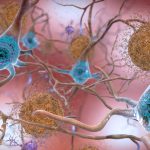by: Valerie Lobato
Throughout this country’s history, the principles that define American democracy are the recognition of fundamental worth, dignity, and the importance of treating others with equality.
With the coronavirus pandemic continuing to plague the nation, becoming health conscious has become an important aspect of everyday life, especially with children being more susceptible to diseases. The effects of structural racism serve to segregate communities of color from being able to access proper healthcare and treatments. Researchers at the University of California, San Francisco have brought to attention how both public and private institutions elevate the public discourse that surrounds the topics of race and racism in America. The focus of this study is the lack of representation in non-white Cystic Fibrosis patients’ eligibility for modulator drugs based on their census-defined racial group and the limited understanding about the range of possible genetic mutations in minority groups.
According to the Cystic Fibrosis Foundation, the presence of Cystic Fibrosis in the lungs progressively limits the ability to breathe over time, contributing to the persistence of infections. Because CF is a genetic disease, people carry two inherited copies of the defective gene that comes from both parents having at least one copy of the CF gene. A possible mutation that can occur is the cystic fibrosis transmembrane conductance regulator (CFTR) gene’s dysfunction in the body, making it difficult for the protein to move chloride from cell surfaces. The lack of chloride needed to attract water molecules to the cell surface allows the accumulation of mucus in various organs to become thick and sticky.
Healthcare providers recommend that patients with CF limit their contact with germs in order to restrict bacteria from clogging airways or digestive systems from creating further complications. Drug companies seek approval for these types of treatments based on the mutations found in the general population with CF. The issue discussed in the study arises from the majority of untreated patients being non-Hispanic white. The reason why this is a problem is because underrepresentation of all minority groups in clinical trials makes it difficult to create treatments that address their concerns. It has become common for individuals with CF to pass away at the age of five due to the lack of treatment or ineffective drugs.
These findings were discovered by assistant professor of pediatrics at UCSF, Dr. Meghan McGarry, MD, MS, and co-author Dr. Susanna A. McColley, MD, from Northwestern University’s Feinberg School of Medicine. McGarry says, “The new drugs are remarkable – they take people from almost needing a lung transplant to leaving the hospital within days…the problem is that these drugs are only approved for people with specific mutations, and everyone else gets left out.”
A study performed in Puerto Rico with Esteban Burchard, MD, MPH, a pulmonologist and professor of bioengineering and therapeutic services at UCSF, found that about 25% of Puerto Rican patients with CF were consistently testing negative during screenings. The genome sequences found in Puerto Rican and Dominican patients demonstrated that the most common type of CF mutations was only recognizable among small populations in the United States. It became apparent that there are genetic differences between white and non-white CF patients that are not being researched enough to understand the range of possibilities within CFTR mutations. Additionally, McGarry and McColley conducted a new study analyzing the number of patients with genetic mutations that are eligible for the CFTR modulator drugs using their U.S. Census-defined racial group. They noticed that there was a wide disparity in the eligibility for treatment, as 94% of non-Hispanic white patients were more likely to receive the drug while Hispanic and Black patients were about 70% eligible based on their current screening results. Most clinical trials performed for CF modulators were largely reserved for non-Hispanic white participants due to local convenience. Medical providers, insurance companies, and researchers struggled to cover the cost of providing translation services, transportation, and lost wages for other racial groups. Only 5% of participants were from either Black, Hispanic, or Asian backgrounds, making it clear that structural racism exists within the medical community and excludes minorities from research due to those circumstances.
The impact of withholding opportunities for access to CFTR modulators for nonwhite patients enables the practice of denying individuals the ability to create treatment plans and health goals that align with their unique circumstances. In addition, the pattern of segregating clinical trials can contribute to a generational racial disparity that can harm children’s development. The current advancements in medical treatments can help increase the average life expectancy of 44 years old that many CF patients face by improving the CFTR protein so that children with CF can live more fulfilling lives.
By understanding that individuals are being targeted based on their racial/ethnic identity, the medical community can diversify their participation pool by researching low-income minority communities in order to document the genetic and geographic differences that potentially affect diagnosis. The socioeconomic factors that plague underrepresented communities can possibly lead to poor birth outcomes and children having a lower life expectancy if they are left untreated. As a society, there needs to be better service planning that is better suited towards diverse populations and providing equal access to healthcare without having to worry about their eligibility for medicines. Resolving ethical dilemmas should focus on providing the necessary information and opportunities for patients to make their own decisions based on their physical state. By recognizing these struggles, it becomes easier to see the areas in which racism and discrimination are impacting healthcare for both providers and patients.





